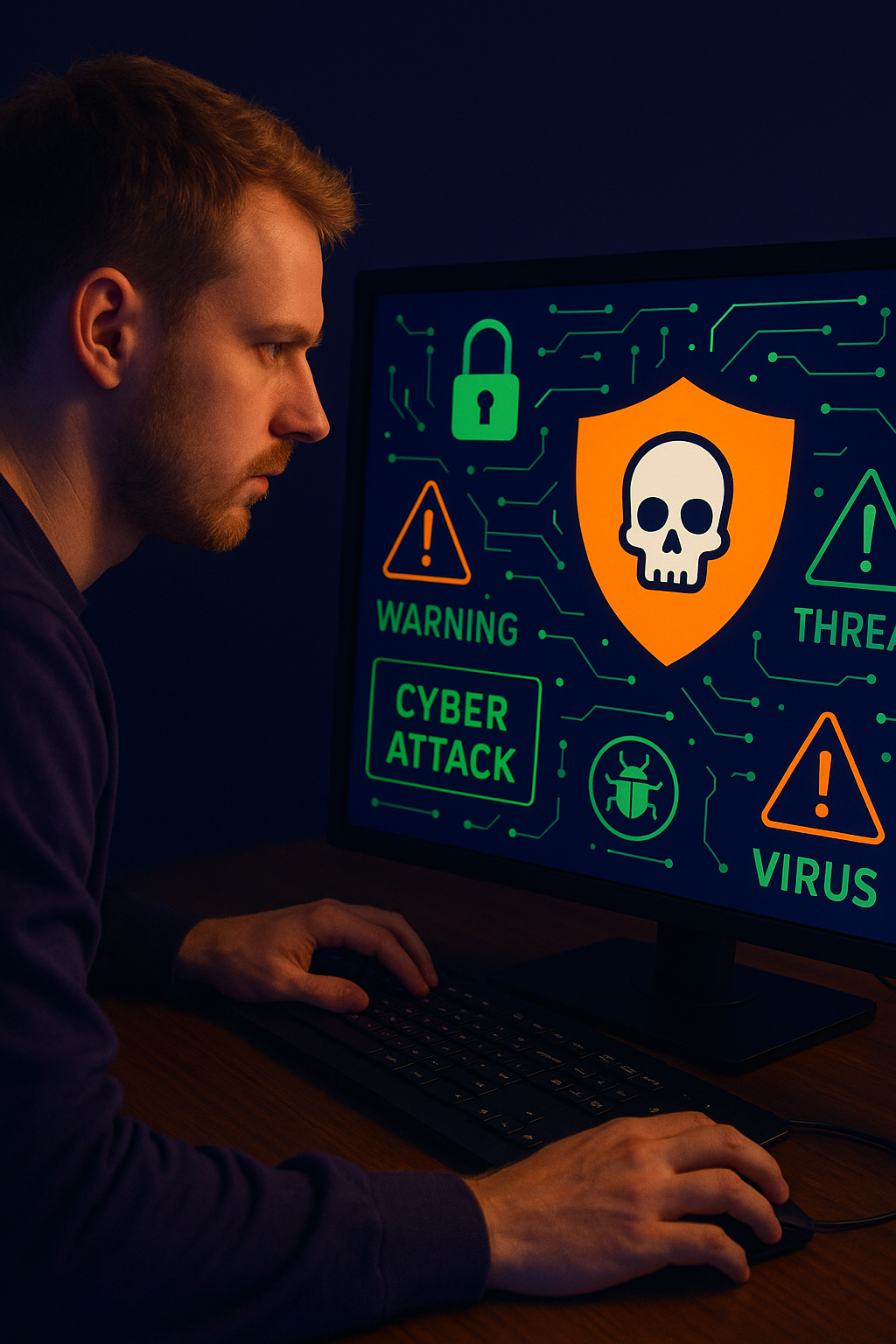Cybersecurity threats in 2025 are evolving faster than most organizations can keep pace with.
In early 2025, a global financial institution paid out a staggering $75 million following a ransomware attack. The cause? A single, compromised endpoint tied to a legacy application that had gone untested for years. It was a silent vulnerability—overlooked, unpatched, and wide open to exploitation. This incident wasn’t just an expensive mistake. It was a wake-up call.
These types of breaches are no longer anomalies. They’re becoming standard headlines, forcing leadership teams across industries to confront a new reality: traditional cybersecurity strategies aren’t keeping up. As threat actors grow more sophisticated, reactive defenses alone no longer provide enough protection. The only way to stay ahead is through proactive measures, especially penetration testing.
The New Face of Cybersecurity Threats in 2025
The cyber threat landscape has undergone a dramatic shift in just a few short years. Threat actors are no longer limited to lone individuals or small-time criminal rings. Many are highly organized, extremely well-funded, and, in some cases, directly supported by foreign governments. These actors collaborate across forums, share intelligence, and operate like legitimate businesses. Their tools and tactics are increasingly advanced, pushing the limits of automation, AI, and social engineering.
Here are five of the most pressing threats organizations are facing in 2025:
1. AI-Powered Phishing and Deepfakes
Artificial intelligence has supercharged phishing attempts. Attackers now use large language models and behavioral data to generate emails that are indistinguishable from legitimate communications. Deepfake technology has also become a mainstream tool in cybercrime. Imagine receiving a video call from what appears to be your CFO, authorizing a wire transfer. It’s a terrifyingly plausible scenario. Financial services, law firms, and healthcare systems are already seeing the impact.
2. Ransomware-as-a-Service (RaaS)
Ransomware is no longer the exclusive domain of elite hackers. With RaaS, cybercriminals can now buy ready-to-use ransomware kits from the dark web. These toolkits come with documentation, support, and even user communities. While these low-skill attackers may not always collect payment, the damage they cause, including data loss, business disruption, and reputational harm, is very real.
3. IoT Device Exploits
From smart thermostats to medical devices, the number of internet-connected endpoints continues to grow. Unfortunately, many of these devices are built without adequate security. Hackers are exploiting these weak points to access larger enterprise networks. In manufacturing, logistics, and healthcare, this is particularly dangerous, as it opens the door to sabotage, data theft, and other risks.
4. Supply Chain Vulnerabilities
The 2020 SolarWinds breach was only the beginning. In 2025, attackers are increasingly targeting vendors, suppliers, and managed service providers as a means to reach larger, more secure targets. These third-party compromises are incredibly difficult to detect and often take months to uncover. For many companies, the weakest link in their cybersecurity posture isn’t internal; it’s a partner.
5. Critical Infrastructure in the Crosshairs
Nation-state actors have shifted their focus to critical infrastructure, including utilities, healthcare, and transportation networks. These sectors are seen as both high-value and high-impact, making them prime targets. A successful attack doesn’t just result in data loss; it can lead to public safety issues, economic disruption, and even geopolitical tension.
How Pen Testing Helps Address Cybersecurity Threats in 2025
In the face of these threats, penetration testing is no longer optional: it’s mission-critical. Organizations can’t afford to wait for an incident to test their defenses. Pen testing brings a real-world lens to your cybersecurity program, providing visibility into your most exploitable weaknesses before attackers find them.
At MainNerve, we believe the value of penetration testing lies in four core areas:
1. Real-World Insight
Automated scans can only get you so far. Penetration testing mimics the tactics of real-world attackers, those who don’t follow scripts, think creatively, and look for chained vulnerabilities. Our human-led testing teams bring diverse backgrounds, skill sets, and perspectives to uncover security issues that automation alone can’t find.
2. Focused Risk Prioritization
Not all vulnerabilities are equal. Pen testing helps you understand which weaknesses pose the highest risk to your organization, based on exploitability and impact. This gives your security and IT teams the clarity they need to act decisively, saving time, resources, and reducing organizational risk.
3. Legacy System Visibility
Many breaches today stem from overlooked legacy systems, old code, forgotten endpoints, or unpatched applications still lurking in your environment. Penetration testing ensures these systems are brought into scope, helping you identify and remediate what would otherwise remain hidden.
4. Compliance with Purpose
While many regulations now require some form of penetration testing (think HIPAA, PCI-DSS, and NIST), that doesn’t mean it should be treated as a box-checking exercise. A well-scoped test provides far more than a report; it delivers actionable insights that enhance your overall security posture, help meet audit requirements, and demonstrate due diligence to stakeholders.
What You Can Do Now
If you haven’t conducted a penetration test in the last 12 months, or if your last one didn’t include your entire attack surface, it’s time to re-evaluate. The threats are evolving too fast to leave things to chance. A comprehensive pen test not only reveals current vulnerabilities but also helps validate your defenses against emerging threats.
Organizations of all sizes can benefit from this type of assessment. Even if you don’t have a full internal security team, working with a trusted partner like MainNerve gives you access to seasoned experts who know what today’s attackers are looking for, and how to stop them.
Final Thoughts
Cybersecurity threats in 2025 are more advanced, more frequent, and more damaging than ever before. However, with the right strategy, they can also be more preventable. Proactive penetration testing provides a clear view of where your vulnerabilities lie, allowing you to address them before attackers can exploit them. At MainNerve, we help organizations uncover hidden risks, prioritize fixes, and strengthen their defenses. Because in today’s landscape, staying secure means staying one step ahead.
Let’s Talk About Your Next Test
Security isn’t static, and neither are your threats. Whether you’re running legacy applications, expanding cloud infrastructure, or onboarding new vendors, your risk surface is constantly shifting. Our expert-led penetration testing is designed to help you understand your real exposure and take action before it’s too late.
Reach out today to schedule a consultation with our team. We’ll work with you to scope a test that fits your environment, your goals, and your budget. It’s time to move from reactive to resilient. Let’s take the next step together.



